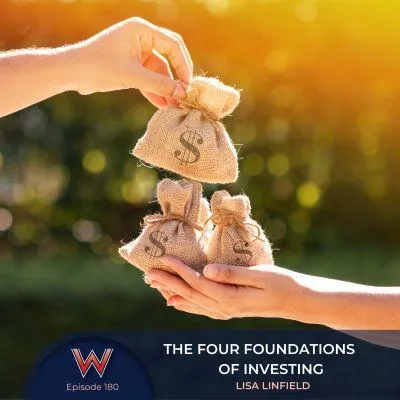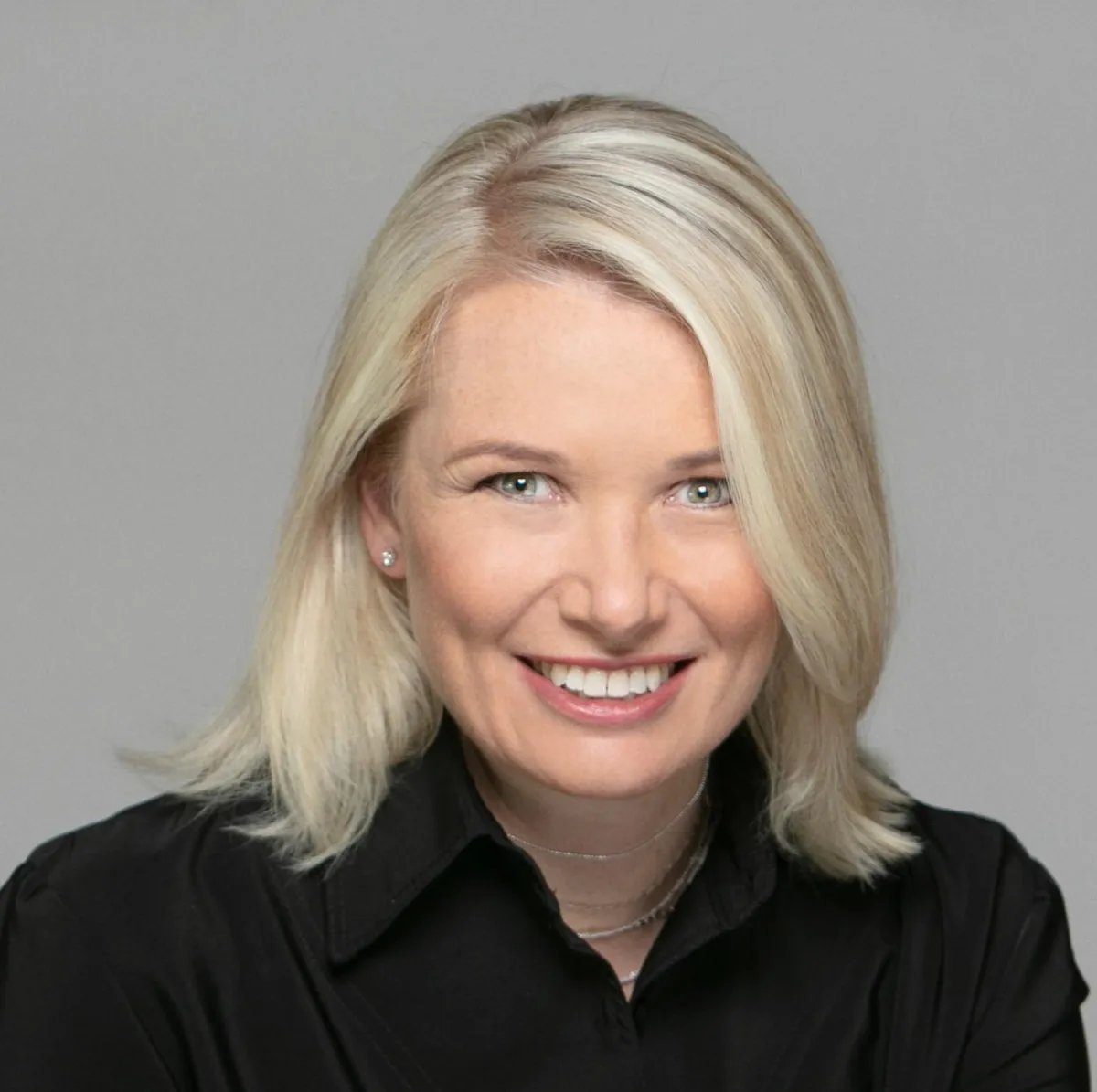Browse for the latest episode of...
working women's wealth

180 The four foundations of investing
Prioritising money for your future life is imperative, but how do you ensure that you have enough? You invest.
Simply put, there is no way you can SAVE your way to retirement, and so, in order to invest, you need to know the basic foundations of investing. In this weeks episode I want to teach you how to understand the landscape of investing so you can make the best choices available.
The most important part of any financial strategy is to understand how you think, feel and behave towards money, and being able to be honest about it will help you and your adviser select the right investments for you..
Show notes:
[03.04] No one can save for retirement
[05.12] The Number One foundation of investing
[07.23] The Second foundation of investing
[09.23] The Third foundation of investing
[11.08] Fourth Foundation of Investing
Your Money Being
Your current financial position
Your Personal Risk Profile
Quotes
"Investing is managing the trade off between the risk you take and the amount of money you will make." - Lisa Linfield
"There is a pretty stable relationship between risk and return when it comes to market available investments – the more risk, the higher the return." - Lisa Linfield
"The most important part of any financial strategy is to understand how you think, feel and behave towards money." - Lisa Linfield
"Investing is ALWAYS contextual. You never invest in isolation of the rest of your financial position." - Lisa Linfield
Related posts and episodes
How much is enough?
Investing Tax free!
Optimising tax on your investments
The decision tree you need to choose your investment
The four foundations of investing
Four things you need to know about your home(financially)
Why you should invest offshore
Why your home is NOT an investment
Subscribe to our podcast on iTunes or Spotify
Please do Subscribe to our Podcast on iTunes or Spotify and leave a review. This helps the podcast to rank higher and therefore makes it more visible to others browsing podcasts in the hope they too may benefit from our content.
Get my book - Deep Grooves: Overcoming Patterns that Keep you Stuck
You can get the first two chapters of my book FREE here
If you want a paperback copy and you’re in South Africa, visit my site LisaLinfield.com
If you want a Kindle copy or a paperback anywhere in the world, visit Amazon
TRANSCRIPT
Hello everyone and welcome to today’s episode of Working Women’s Wealth. I’m Lisa Linfield and I’m building a community of Women who are committed to the journey of living Financially Free lives – whether they’re just beginning, or nearly there, we support each other through our lessons learnt, good and bad, so ALL may benefit.
Over the last 15 episodes we’ve looked at how you move from debt to investing.
Once my clients have started to create the discipline of prioritising money for their future life, automatically saving a little bit each month, it becomes an absolute high for them. For the first time they see they CAN save – and they watch that balance grow and grow and grow. They begin to feel in control of their money, and for the first time, they start to see a way out of the stress.
And once they’ve saved their 6 month emergency fund, the question always is – so what next?
As I mentioned in episode 173, the first place they start investing is in the Tax Free investment options in your country. That money is long term money, that you should try “forget about”. Set up an automated debit order, and leave it.
The next tier of investing is into funds as we discussed in last week’s episode. But the question always raises its head of ‘which fund’?
Now, as always, I will say that I don’t know your personal circumstances, so I can’t advise you specifically. But, as always, I want to teach you how to understand the landscape of investing so you can make the best choices available. This week we are going to look at the principles of investing and then Next week we will look at the types of assets, and the week after we’ll put it all together in ‘The Decision Tree of Investing’.
So today we’re going to focus on the principles of investing. But let’s start with the first question – why invest?
No one can save for retirement
There is NO WAY you can save for retirement. None whatsoever.
So let me brake that down.
Let’s say you work from 20 years old to 60 years old – that’s 40 years. And let’s say you retire from 60 years old to 100 years old, that’s 40 years again.
That means in order to have enough for retirement, you would need to theoretically save half of everything you earned from the day you started working.
Now there are two problems with that
1. As we get older, we earn more. So in order to maintain the standard of living we have at retirement, we would need to save more than half to make up for the fact that our earning in our 20s will be way short of our earnings in our 40s.
2. Inflation means that what it costs today for a loaf of bread is no where near what it will cost in 12 years time. In fact, if you have an inflation rate of 6% - then every 12 years, the amount you saved would be able to buy you half of what it did when you saved that money.
“But don’t I earn interest?” is what I hear most people say…
Saving is putting away cash in your bank saving account. In almost every country in the world, the interest you earn, or monthly payment you will get for saving in that account, is less than inflation. Right now, at a time of financial crisis globally, interest rates are the lowest they’ve been in ages… and in some countries, is 0% meaning literally, the bank is offering you a digital place to store your money.
So, there is no way, unless you’re able to save 60% of your money, you can save your way to retirement.
So what do you do? You need to invest.
But in order to invest, you need to know a few basic foundations of investing.
The Number One foundation of investing
It is so important that you remember this basic principle – that investing is managing the trade off between the risk you take and the amount of money you will make.
If you hide your money in your mattress, it is hopefully perfectly safe, but you will make no money.
If you invest in your friend’s new business, you take a lot of risk. So you have the risk that it can do very well and you can make a lot of money – but you also take the risk that you may never see your money again.
I want to pause a little on ‘speculative investing’ or ‘get rich quick’. According to one of my favourite money books, “The Millionaire Next Door” by Thomas Stanley, you have a 1 in 4,000 chance of getting rich quick. And, as I mentioned in previous episodes – one of the reasons why lottery winners don’t stay rich is that they haven’t learnt the skills and mental discipline to hold onto and grow money… so when they receive a sudden amount of cash, the skills and mindset they have lead them to spend it, not save it.
Trying to get rich quick is the highest risk option for investing. You are 120 times more likely to become a dollar millionaire by doing it the good old fashioned way of hard work and investing than you are by trying to get rich quick.
So, the first and most important foundation of investing is that, In general, excluding the two extremes of cash in mattress, and get rich quick… there is a pretty stable relationship between risk and return when it comes to market available investments – the more risk, the higher the return.
So how does that affect you? Make sure you understand the risk and the return of what you’re investing in. If something is ‘too good to be true’… it really is, and you need to be prepared to lose it all. But also know that risk period over time.
The Second foundation of investing
The second foundation of investing is inflation.
Now inflation describes something we all experience in our everyday life. That the price of what we buy goes up over time. A loaf of bread will cost more in ten years time than it will today.
Our goal is to save for our future – to use the power of investing to not only make sure that the money we save today can pay for the SAME things it can pay for in the future – but that it will grow more than inflation so that we don’t have to save as much as we should do.
So it is important when you think about investment returns, or how much money this investment will grow each year, that you think of it in what’s known as ‘inflation plus’ terms. So, if your inflation is 3% and the investment you’re buying should give you 6% return, then you are earning ‘inflation plus 3%’. But if your inflation is 6% and the investment is giving you 6% then you will only in fact be covering inflation – so it will be inflation + 0%.
So often when people look at investments in other countries they think, “I’m not going to invest there… the investment returns are so low. South Africans, for example, have traditionally had a 6% inflation rate… so are used to return numbers of 8-12% - or inflation + 2-4%. So when they see 3-5% returns in the US, they think that’s very low. But if inflation is 1% there, then that’s also an inflation + 2-4% return.
So what does that mean for you? Make sure that your investment can get an annual or yearly return or growth above inflation each year, and then always think of that growth in terms of what it is above inflation.
The Third foundation of investing
The risk and return relationship is modified by one major factor – TIME.
As we discussed, the lowest risk asset is cash, and through most times in history, cash in the bank as savings can earn you a steady, small income each year. So it’s the lowest risk, safest investment right?
Well, if your period of investing is 20 years, then no. It’s not a safe investment.
And that comes down to inflation. If your inflation rate is 4% and your bank is giving you 2% on your savings account, then each year your money, with its growth, is going to buy you less than it did the year before. It loses ‘buying power’. So you are guaranteeing that your money won’t be able to meet your needs let alone grow more to help you close your gap to what you need to have.
Now shares, for example, are the opposite.
In any one year, the range of any stock exchange returns or growth can be from -20% to + 40%. In a 5 year period, from 0-35%, but over a longer than 20 year period, you should gain an inflation + 8% return or more.
So what does that mean for you? Whenever you think about an amount of money you want to invest… be clear about the time frame. Are you investing this for a year to three years – then you need to invest in the Low Risk category. If it’s 3-5 years, then you can have some low risk and some medium risk… and 5-10 years, invest in more medium risk, and 10 years plus, medium to high risk.
We’ll discuss more on those risk categories and actual investment types in the next episode.
The Fourth Foundation of Investing
The fourth foundation of Investing is YOU.
Whenever someone asks me what they should invest in, my answer is always, “Well that depends on you!”… and they look at me with confusion. Surely there’s a recipe – a right and a wrong?
Yes, there is. But unfortunately, not one of us behaves like the textbook says we should.
And, no matter how much modelling we do as financial advisers, the world doesn’t behave like an excel sheet, and nor do you respond the what’s happening like the excel sheet says you should.
That is no more obvious when the markets collapse, or when a particular share or asset is growing at silly rates. When the market collapses, the textbook says, “stay invested”. Ask any financial adviser what happens as the market is collapsing – people withdraw their money to protect themselves from further losses. And, take Bitcoin – it’s growth in the last year is unjustified, yet, at its highest, people experience FOMO (Fear Of Missing Out), and buy at the top.
There are three elements of you that impact your choice of investment
1. Your Money Being
2. Your current financial position
3. Your Personal Risk Profile
Your Money Being
The most important part of any financial strategy is to understand how you think, feel and behave towards money, including what you believe about money and why, and your past experiences with money.
If you’re a person who can’t help themselves, and always spends any savings, then it’s actually less risky in the long run to invest in things that won’t let you withdraw the money, or make it hard to. Like retirement funds that don’t let you access it until 55… or physical property that take a while to find buyers and go through the sales process.
I have a client whose wife believes deeply that the stock markets are fundamentally evil. So, a portion of their cash is invested in physical gold in Switzerland.
If you can’t handle the value of your money invested bouncing around the place, and are likely to get so stressed when it drops and want to sell (when you should be holding), then you need to invest in lower risk investments… but if you’re able to invest and hold for many years and not worry, then you will be able to take on riskier investments.
Knowing your Money Being – your thoughts, emotions, behaviour – and being able to be honest about it, will help you and your adviser to select the right investments for you.
Your Current Financial Position
One of the biggest challenges for any financial adviser is the sentence that starts, “I was out to dinner with a friend and they recommended XYZ”.
It makes me want to run away and hide. Here’s why.
What is good for your friend to invest in, may not be good for you. They may have millions of dollars stashed away, which is why they can afford to take a lot of risk on a speculative investment… whilst you may have none.
They may have no need for that money in the next 5 years, whereas you may need to pay for your child’s university education.
Investing is ALWAYS contextual. You never invest in isolation of the rest of your financial position. And that includes the financial context of your spouse, your kids needs, your parents you may have to support… all of it.
Your Personal Risk Profile
Your Personal Risk Profile brings together many of the factors we’ve discussed and others to form an concrete view of the level of risk you should take for your investments. It has four factors:
1. Your Financial Risk Tolerance Assessment – which is a statistically validated assessment of your Financial Risk Tolerance that you get from a completed questionnaire
2. Your Risk Need – which assesses how big the gap is from your Current Financial Position to your retirement need. You may need to take more risk than your Risk Tolerance position indicates in order to meet your retirement objectives
3. Your Risk Capacity – means your ability to tolerate short term losses if the market drops
4. Your Time Horizon – for the specific investment you are making.
So when you look to invest, make sure you understand how the four foundations of investing apply to you.
Friends, I know it seems a hard slog to educate yourself on financial jargon… but it is so worth it – even if you do have a financial adviser – it helps you to make sure that your investments are managed well and enables you to partner with them, not be blindly led.
Please do share this episode with someone you think needs to grow their financial muscle!
Take care… and have a great day.

Explore
On Social
YourBrand.com - All Rights Reserved - Terms & Conditions

